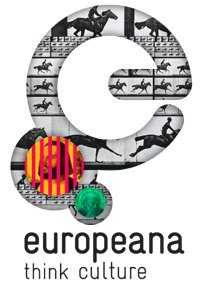Today, Creative Commons announces the release of its Public Domain Mark, a tool that enables works free of known copyright restrictions to be labeled in a way that allows them to be easily discovered over the Internet. The Public Domain Mark, to be used for marking works already free of copyright, complements Creative Commons’ CC0 public domain dedication, which enables authors to relinquish their rights prior to the expiration of copyright.
“The Public Domain Mark is a further step on the path towards making the promise of a digital public domain a reality,” said Michael Carroll, a founding board member of Creative Commons and a law professor at American University.
Europeana—Europe’s digital library, museum and archive—is the first major adopter of the Public Domain Mark. Europeana estimates that by mid-2011, the Public Domain Mark will be used in connection with millions of out-of-copyright works made available through its portal.
“An important part of our mandate is to ensure that digitized works made available through Europeana are properly labeled with rights information, including when a work is free of known copyright restrictions so that teachers, students and others can freely use it in their work, changing it and remixing it as they wish,” noted Jill Cousins, Executive Director of Europeana.
The Public Domain Mark in its current form is intended for use with works that are free of known copyright around the world, primarily old works that are beyond the reach of copyright in all jurisdictions. We have already started mapping the next phases of our public domain work, which will look at ways to identify and mark works that are in the public domain in a limited number of countries.
A final note about design. We took this opportunity to revise the CC0 deed, to align it more closely with the Public Domain Mark deed. We think the design changes will help everyone recognize the difference between our licenses, which apply to works restricted by copyright, and our public domain tools.
For more information, read the full press release.










The only image shown in this posting is not in fact the image the posting is talking about.
Thanks for the comment Joe. I updated the post to place the Europeana logo in context and added a Public Domain Mark button.
This is really neat stuff. I hope to see this mark spread all over the web.
Way to go!
If you want to actually use the mark, you need to go to http://creativecommons.org/choose/mark/
I’m a bit baffled why this URL isn’t included in the post above. I had to spend several minutes digging around the site to find it.
I have been using CC: by-nc-sa for my blog for serveral years.
Just now, I changed it into the new Public Domain.
As a volunteer focused on software skills, I think there’s nothing really belong to me instead of all users.
Thank you CC.
and thanks for all the CC contents created by people all over the world.
I have been using CC: by-nc-sa for my blog for serveral years.
Just now, I changed it into the new Public Domain.
As a volunteer focused on software skills, I think there’s nothing really belong to me instead of all users.
Thank you CC.
and thanks for all the CC contents created by people all over the world.
Ryan, sorry for the oversight, thanks for posting the link!
xbeta, thank you! However, you ought to be using the CC0 public domain dedication, since for better or worse, your works by default start out under copyright. Go to http://creativecommons.org/choose/zero or just replace ‘mark’ with ‘zero’ in the link and image URLs.
Mike
Thanks for your reply and updating the article. I changed the mark and link on my blog to CC0.
Thanks for your reply and updating the article. I changed the mark and link on my blog to CC0.
Further adding to the confusion: There is one graphic labeled “Public Domain” at the top of the post, and a different one at the bottom. Which one is the new Public Domain Mark being touted here?
MDC, the graphic at the bottom of the post is for CC0. This is where the post discusses CC0. I’ll do a followup explanation of branding soon.
Hi,
Can CC change their deeds under the same version number? Automatic upgrades don’t happen with the licenses, why would it happen with CC0? Can CC dump the waiver portion and still call it CC0 1.0 Universal? Is a “changelog” available on the site to see the changes since Original CC0 1.0?
Thank you, Dan
Dan,
Text on deeds can change, but it is just explanatory. The ‘legalcode’ never changes once published. This is true of all CC licenses and CC0. For the latter, this means http://creativecommons.org/publicdomain/zero/1.0/legalcode will never change.
You can see changelogs leading up to the final version at http://code.creativecommons.org/viewsvn/ccwordpress/trunk/www/legalcode/
OK thank you, I misunderstood what “deed” meant and thought you changed the legal code.
Keep up the public domain and CC0 stuff going! Too much attention is given to the copyleft/sharealike stuff, which forces you into the system. Modern public domain material is seriously lacking. Keep up the good work!
-Dan
can someone explain to me why this is so hard to find? Why isn’t it prominently listed on the CC website, and under the license chooser? While technically it’s not a CC license, certainly it’s related, and on this site.
For that matter, why isn’t this an option on flickr? What is the resistance to submitting things to the public domain?
d.i.